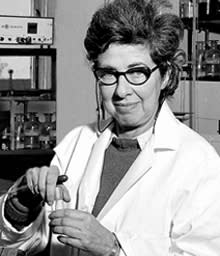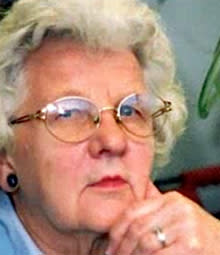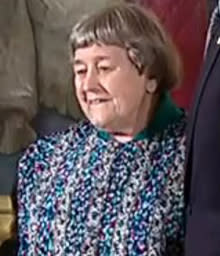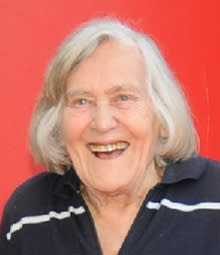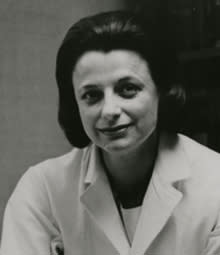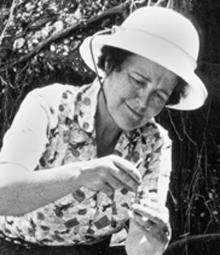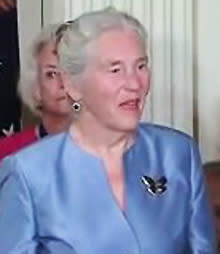Gone in 2013: A Tribute to 10 Remarkable Women in Science
Pioneering scientists and engineers are often overlooked in popular retrospectives commemorating the year’s departed. In particular, women in such fields tend to be given short shrift. To counter this regrettable circumstance, I present here a selection of 10 notable women in science who left us in 2013. Each of these individuals contributed greatly to her field and should be remembered for her exceptional accomplishments. This, of course, is not a comprehensive list; I’d welcome your thoughts, in the comments below, on any others who may also be deserving of recognition.
Eleanor Adair
A dual expert in physics and psychology, Eleanor Adair was a trailblazing American researcher in the field of microwave radiation safety. She carried out numerous controlled studies in which she exposed monkeys and human volunteers–including herself–with microwave radiation. Her conclusions were always the same: environmental microwaves such as those emitted by cell phones, microwave ovens, and power lines have no adverse effects on health. Adair’s work ultimately helped set international standards for microwave exposure. She died on April 20 at age 86.
Credit: MRC National Institute for Medical Research
Brigitte Askonas
Austrian-born British immunologist Brigitte “Ita” Askonas contributed many influential works on the nature of the human immune system. She is best known for her groundbreaking studies elucidating the behavior of antibody-producing B cells and determining the role of T lymphocytes in viral infections. Askonas served for 12 years as head of the Division of Immunology at the National Institute for Medical Research in London and was both a fellow of the UK’s Royal Society and a foreign associate of the U.S. National Academy of Sciences. Askonas was 89 when she died on Jan. 9, 2013.
Photo by Mary Jackson, courtesy of the Lemelson-MIT Program
Ruth Benerito
Holder of 55 patents and a 2008 inductee to the National Inventors Hall of Fame, Ruth R. Benerito was an American chemist best known for her invention of “easy-care” permanent press cotton, a staple of modern fabrics. Her work at the U.S. Department of Agriculture in New Orleans focused on chemically bonding cotton fibers in a way that would prevent wrinkling. Today, many think of her inventions as having saved the cotton industry. Benerito passed away at age 97 on Oct. 5, 2013.
Credit: Wikimedia Commons
Yvonne Brill
Yvonne Brill was a Canadian-born American aerospace engineer whose career focused on developments in rocket propulsion. Her most important contribution was the invention of a thrust mechanism that is now routinely used to help keep satellites in their proper orbits. Brill was inducted into the National Inventors Hall of Fame in 2010 and awarded the U.S. National Medal of Technology and Innovation in 2011. Her death in March at age 88 led to a review of best practices for writing about notable women in history after The New York Times received criticism for citing in Brill’s obituary her ability to “make a mean Beef Stroganoff” before any mention of her professional accomplishments.
Credit: University College London
Katharine Giles
Katharine Giles, a British climate scientist studying the effects of global warming on sea ice, died suddenly on April 8 at age 35 after being hit by a truck while cycling to work in London. Giles’s most recent research focused on using radar data to monitor sea ice thickness in the Arctic and Antarctic. Giles had discovered that satellite altimeter observations between floes, or large chunks of sea ice, could illustrate to scientists how winds affect the Arctic Ocean in the wake of sea ice melting.
Credit: Wikimedia Commons/Cassinam
Margherita Hack
Known as the “lady of the stars,” Margherita Hack was a beloved Italian astrophysicist, science writer and public commentator. The first woman to lead an astronomical observatory in Italy, Hack taught astronomy at the University of Trieste. Some considered her an Italian Carl Sagan because of her enormous influence as a writer, teacher and public figure. Hack used her gift for communication to champion civil rights, rational thinking, vegetarianism and the wonders of astronomy. She died on June 29, 2013 at age 91.
Photo courtesy of the Becker Medical Library, Washington University School of Medicine.
Virginia Johnson
American sexologist Virginia E. Johnson was one of the first researchers to systematically investigate human sexuality. Together with her colleague and former husband, William H. Masters, Johnson made clinical observations of some 700 volunteer subjects to chronicle the physiology and psychology of human sexual behavior. This work led to their identification of four distinct stages of sexual behavior, or, what is now known as the human sexual response cycle. Johnson co-authored numerous papers and books detailing the duo’s findings and became a sought-after sex therapist as part of the Masters and Johnson Institute in St. Louis. Johnson passed away on July 24. She was 88.
Credit: Academy of Natural Sciences of Drexel University ANSP Archives coll. 457
Ruth Patrick
The field of limnology, or freshwater ecology, owes a great debt to American environmental scientist Ruth Patrick, a pioneer in the study of water pollution. Her work on single-celled algae known as diatoms led to a new understanding of the types of environmental stresses that can affect freshwater systems. A longtime environmental activist, Patrick authored more than 200 research articles and was honored in 2009 with the National Medal of Science. She died on Sept. 23, 2013 at the awe-inspiring age of 105.
Candace Pert
Candace Pert was an American neuroscientist and mind-body researcher who identified the first opiate receptor, or cellular binding site, in the brain. Her discovery laid the groundwork for future research in brain biochemistry and helped her graduate advisor–but not her–earn the prestigious Lasker Award, often referred to as the American Nobel. Pert, who died on Sept. 12 at the age of 67, also discovered the receptors for Valium and PCP but eventually shifted her career to focus on the application of scientific standards to questions of whether and how the brain may play a role in disease.
Credit: Wikimedia Commons
Janet Rowley
That cancer can have a genetic basis has only been known for about 40 years, and it was American physician and geneticist Janet Rowley who discovered the first evidence of such a connection. While working with leukemia in the early 1970s, Rowley found that chromosomal slip-ups known as translocations can lead to the development of cancerous cells. Her research on cancer genetics was far-reaching and laid the groundwork for a number of important therapies. Rowley, who died at age 88 on Dec. 17, was the recipient of countless awards for her outstanding work, most notably the National Medal of Science, the Lasker Award and the National Medal of Freedom, which is the United States’ highest civilian honor.
Follow Scientific American on Twitter @SciAm and @SciamBlogs. Visit ScientificAmerican.com for the latest in science, health and technology news.
© 2014 ScientificAmerican.com. All rights reserved.

